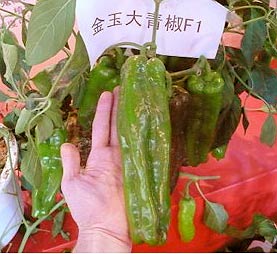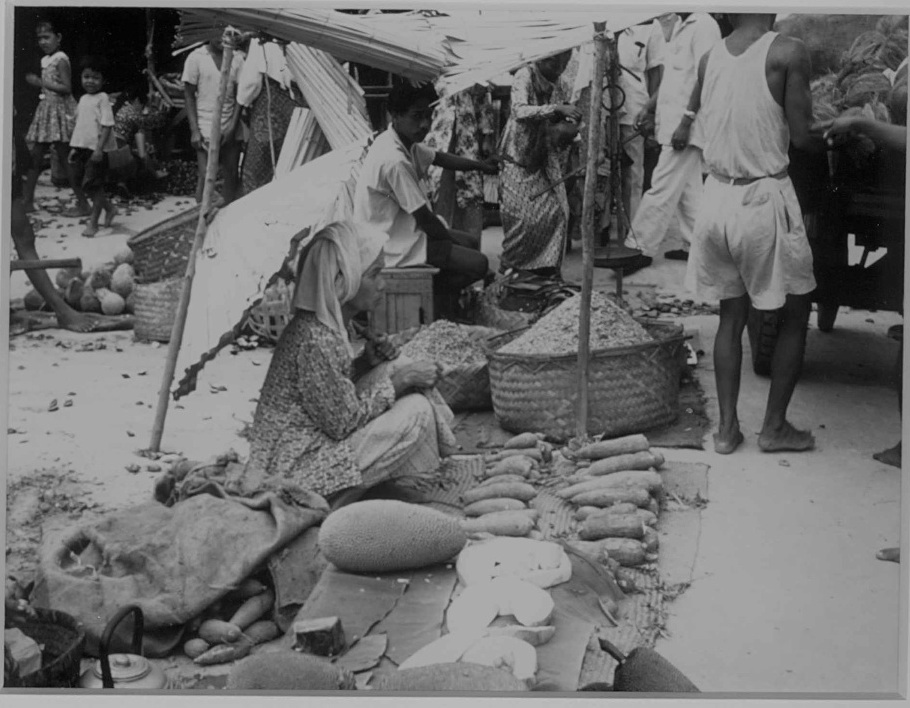 |
 |
| Pepper producer from China’s westernmost region of Xinjiang, adding local flair through traditional costume – and internationality by offering Pasilla peppers. |
“Gold-and-jade big green pepper,” an example of the results of China’s work developing new pepper varieties. |
Similar issues can be seen regarding fresh pepper production. Here, too, foreign influences are rather limited, to say the least. Habaneros have made their way to Hainan, also known as “China’s Hawaii.” Hainanese Habaneros being sold in the Chinese supermarkets do not, however, seem to actually be that variety. Pasilla peppers have begun to be grown in Xinjiang, China’s northwestern, largest, and most recently unruly, region. The producers I spoke to certainly were happy about it, being able to offer something new—but to them, it also seemed to be all about export sales.
China is still largely agricultural (60% of the population are employed in this sector). Most of it is far less sophisticated than European, let alone American, farming. Rather, most farming means small patches being cultivated primarily for personal use and only secondarily for selling on local markets. Export-oriented agriculture is strong, but still a minority of farming activity.
 |
| Hybrid seed company presenting samples of their product line – and jumping at the chance of taking pictures with the visiting foreigner. |
The internal, local orientation can also be seen in the development of varieties. The kinds of peppers that are being grown are, to a large extent, landraces: chile peppers grown from seed, propagated by the farmers themselves. Modernization means that these are given up in favor of hybrid seed, if affordable. Judging by the plants that were on exhibit at the Capsicum Industry Expo, Chinese breeders are very successful at increasing yield and fruit size. Genetic diversity is necessary, nonetheless; landraces and traditional products made from them could, with better control for quality and safety, and with good marketing, be interesting to the global market for local products—unfortunately, they are slowly but steadily being lost.






